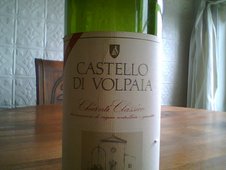
While I always liked the idea of Michael Dorf's City Winery—the bar, restaurant, music hall and working winery situated in the heart of Tribeca—I was also more than a little skeptical of the kind of wine the place would turn out. A music impresario who fell in love with wine and suddenly decided to make his own? Hmm. Of course, my feelings about the possible product didn't matter in most cases, since I would never taste it; most of the barrels are privately owned by celebs and rich enthusiasts who have the bucks to heavily invest in their passion for vino. But Dorf said early on that some barrels would be reserved for use in the restaurant and be served by the glass. I was intrigued, but would the resultant wine actually be good-good, or just good-interesting?
I tried a few times last spring to sample one of the house wines, but the staff could never tell me if the stuff was actually ready to serve yet. So I gave up on the quest for a bit. The other day, however, I renewed my mission, and scored. There was Zinfandel, there was Chardonnay, there was Rose. What would I like? Since it was 11:30 AM (hey, you sieze your opportunities when they arise), I went for the white.
I was poured a nice, ample dose of a sunny, golden liquid. It was 100% Chard, I was told, from Lake County, California, fermented in steel tanks, unfined and unfiltered. For seeing no oak, the white still possessed a ripe roundness. It's was pleasingly medium-full in body, with some impressive acidity supporting the flavors of green apple and pear. I have to say it was rather well done for a first try, quite fresh and attractive. Nice job.
The homemade hooches are given snappy names. The Chard is called Downtown White, while the red has the much cooler name of Van Dam Zin (named after nearby Van Dam Street). I didn't try the Zin, because it was a whopping 15.5% alcohol. I sniffed a bruiser and I didn't want to spoil the pleasant impression left by the Chard. Another time.







